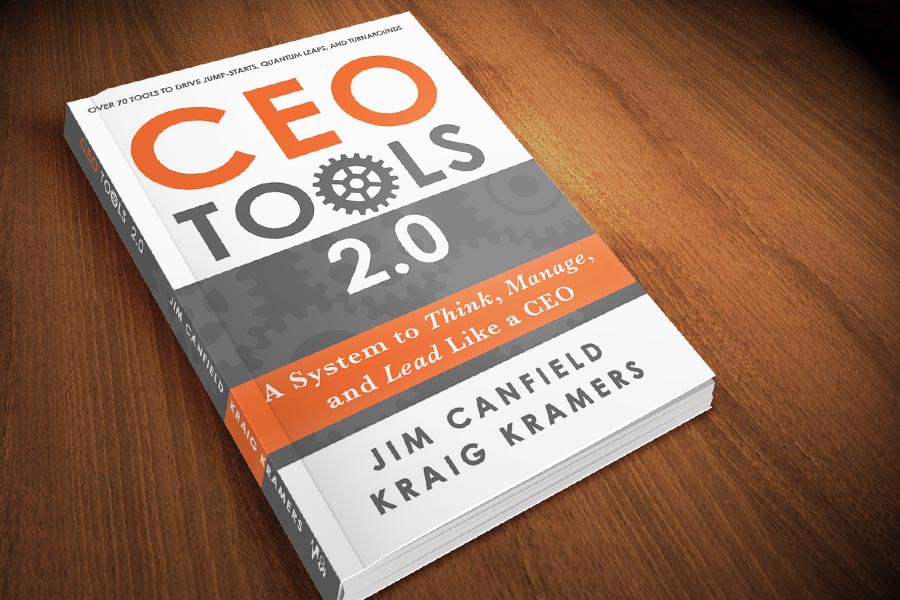CEO Tools’ Book Excerpt: Track Metrics and Give Feedback
March 16, 2018

Aprio recently published the book “CEO Tools 2.0: A System to Think, Manage, and Lead Like a CEO.” Each of its seven chapters addresses a step in the CEO tools business system. We will publish highlights of each chapter here. Below are portions of Chapter 3: Track Metrics and Give Feedback.
Consider these two questions: Are you gaining momentum or losing steam in your business right now? What actions are you taking in response?
If you can’t instantly answer those two questions, you may already be off track. But you wouldn’t be alone. More than a few companies have been in the midst of going public when they had a profit hiccup, an unexpected loss, or a major drop in revenue. Still others have been in the process of refinancing when an unforeseen event caused deep concerns for both the lenders and the owners. They were caught off guard, often at the worst possible time.
Companies can encounter catastrophes if they don’t have all the information they need.
Measuring results is like taking a fresh look at the near-term future each month. We call this responsive-results tracking, and this tool fuels anticipatory thinking and proactive problem-solving. In Chapter 4 of “CEO Tools,” we talk in depth about anticipation as a tool. But let’s find out how tracking metrics can help avoid these catastrophes and, even more important, produce profits beyond your wildest dreams.
Whys and Hows of Tracking Metrics
Can you imagine watching a football game that didn’t have a scoreboard? Or playing a round of golf without tracking your strokes on a scorecard?
Of course not. Then why would you run a business that way?
It should come as no surprise that you’ve got to measure performance to achieve your goals. That’s the clear message of WGMGD: What gets measured gets done.
Order “CEO Tools 2.0: A System to Think, Manage, and Lead Like a CEO” by Jim Canfield and Kraig Kramers
As a leader, you need performance information to make a host of business decisions. And your people want to know how they’re doing in relation to the company goals. Remember the second question that every employee wants to know: How am I doing?
To achieve your goals, you must track performance, measure the outcomes, and give your people feedback. It’s that simple.
Here are the three steps, which you can think of as the “WGMGD Formula.”
- Set targets: Set target metrics for specified goals with your key people. Get everyone involved in determining what should be measured to ensure the desired results.
- Track results: Track results against the target metrics. This chapter presents a number of tracking tools you can use.
- Give feedback: Give regular feedback on the gap between the results and the target. Schedule appropriate meetings and create visual scoreboards that provide ongoing feedback on how results measure against desired outcomes.
Tools for Metrics and Feedback
A wide array of tracking tools is available for your use. Select the tool (or tools) that you think will do the best job for you, try one or more, and be open to trying another if you’re not satisfied with the results.
- Quarterly Priorities Manager: You and each of your direct reports set five quarterly goals or priorities that are tied into your company vision, strategy, and goals. The quarterly focus helps link the day-to-day to the longer-term, big picture.
Review the Quarterly Priorities Manager (QPM) weekly and share “report cards” with the team to broaden teamwork, better allocate scarce resources, and facilitate success toward your vision.
- Trailing Twelve-Month Chart: Use T12M charts to track sales and profit, and key indicators such as gross margins. It is the only chart that will never ‘lie’ or need interpretation. Because each data point on the chart contains twelve months of data, it includes any seasonality or business cycles. It reflects a true trend that you can trust. You’ll be amazed at how this tool allows you to see your business differently.
- Daily Cash Report: Any entrepreneur will tell you that cash is king. This tool will help you track cash daily and reforecast cash weekly, allowing you to head off a crunch, avoid growing too fast, and stay well capitalized.
- Identify your Top 5 daily, weekly, and monthly Key Performance Indicators (Kipps): These are the metrics that drive the performance of your business. They can serve as an early warning system to catch slowing growth by monitoring the actions that cause it. Know the most meaningful measures for your business and watch them like a hawk.
- Key leading indicators: Key leading indicators (KLIs) are a special type of key performance indicators. KLIs are indicators with an orientation to future trends and outcomes. These are metrics that not only report your results, they can predict your results.
- Communicate results to maximize results: Everyone wants to be part of a winning team. People like to know whether they’re making it, so tell them what’s going on. What gets measured and communicated repeatedly is what gets done. One of the top measures of trust by an organization’s employees is, “does my company communicate frequently and honestly about the state of the business?”
Coming next: “CEO Tools” Chapter Four: Anticipate the future and Create It
Previously: “CEO Tools” Chapter Two: Communicate to Build Trust
To discuss these ideas or to book Jim to work with your team, email him at jim.canfield@ceotools.com
Stay informed with Aprio.
Get industry news and leading insights delivered straight to your inbox.
